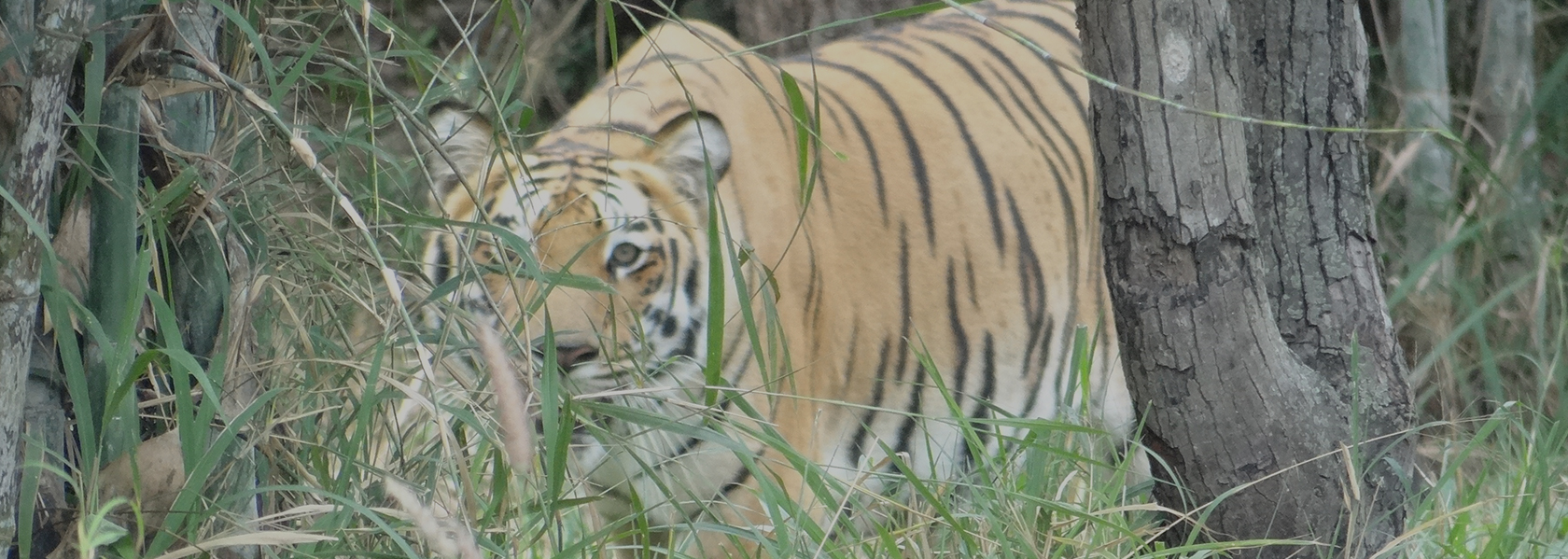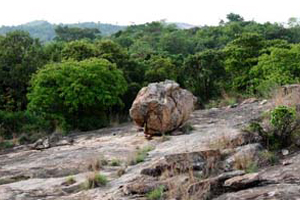
Flora & Fauna

Flora
The type of vegetations in BBP can be broadly classified into two types as described below.
SCRUB TYPE (DRY DECIDUOUS SCRUB FORESTS)
Vegetation in this type of forest is characterized by stunted tree growth open canopy of 10% and below. This type of vegetation is the resultant action of repeated hacking by villagers and grazing by cattle in the past from the adjacent villages. Important upper canopy trees are Anogeissus latifolia, Chloroxylon Swietenia, Acacia leucophloea, Acacia catechu, Stereospermum chelonoides, Zizyphus spp, Diospyros spp, Santalum album, Shorea talura, Azadirachta indica, Terminalia spp, Dendrocalamus strictus etc.,
Whereas Lantana camara, Phoenix acaulis, Cassia tora, Cassia auriculata, Randia floribunda, Pterolobium indicum, Capparis spp, Gloriosa superba form the undergrowth. Acacia instia is the common climber. Grass is generally abundant in this type of forests. Scrub forests afford good foraging habitat for herbivores in rainy season. This type of vegetative is found around rocky patches in the bear safari and in parts of the safari area and rescue center.
SOUTHERN TROPICAL DRY DECIDUOUS FORESTS
In this type of forest, the canopy opening is 10 – 40% and the trees remain leafless during dry months. Top canopy consists of Terminalia spp, Pterocarpus marsupium, Dalbergia latifolia, Dalbergia paniculata, Gmelina arborea, Lagerstroemia parviflora, Boswellia serrata, Dendrocalamus strictus. Second canopy consists of Vangueria spinosae , Randia dumentorum, Wrightia tinctoria, Ziziphus jujuba, Santalum album, Kydia calycina, Diospyros melanoxylon, Shorea talura and Cassia fistula.
The undergrowth consists mostly of grasses with lantana breaks here and there. Eupatorium, Phoenix humilis, Helicteres isora, Desmodium spp. Gloriosa superba form the undergrowth. This type of vegetation is conspicuous in the valley portion all along the streams passing through the BBP.
SOUTHERN TROPICAL MOIST MIXED FORESTS
This type of forests is the mixed deciduous forests with canopy cover up to 35% and above. They are in patches limited to the moist valleys in Ragihalli RF. The species comprising the top canopy of this type are Tectona grandis, Terminalia spp, Pterocarpus marsupium, Dalbergia latifolia, Lagerstroemia lanceolata, Pterocarpus marsupium, Bombax ceiba, Adina cordifolia, Ficus racemosa and other species of Ficus. The lower canopy consists of Emblica officinalis, Mallotus philippinensis, Kydia calycina, Randia dumetorum etc. The undergrowth consists of Solanum ferox, Solanum indicum, Helicteres isora, Hemidesmus indicus, Lantana camara, Eupatorium etc. This is the type of vegetation present in the valley –picnic corner, (the old lac reserve).
Fauna
Other than captive animals available in the Zoo, Safaris and Rescue Centres of Bannerghatta, following animal life forms are found in wild in the Bannerghatta National Park; that visit to the non fenced area of Bannerughatta Biological Park and some of them do live in it.
MAMMALS
Elephant, Leopard, Indian Bison, Chital, Sambar, Sloth Bear, Barking Deer, Wild Boar, Wild Dog, Bonnet Macaque, Striped Hyena, Porcupine.
BIRDS
Peafowl, Grey Jungle Fowl, Partridges, Quails, Flycatchers, Wood Peckers, Ibis, Storks, Sunbirds, Flower-Peckers, Thrushes, Eagles, Cuckoos, Parakeets, Orioles, Minivets, Wagtails, Drongos etc., form part of avifauna of the BBP in nature.
REPTILES
Land monitor lizard, crocodiles, tortoise, python, rat snake, cobra, krait, viper etc. are the part of animals live in the water holes/ blank area of the BBP.
AMPHIBIANS
Frogs, toads, salamander etc., in the water bodies of BBP.
INSECTS
Varieties of butterflies, bees, ants, etc are seen in the BBP.














